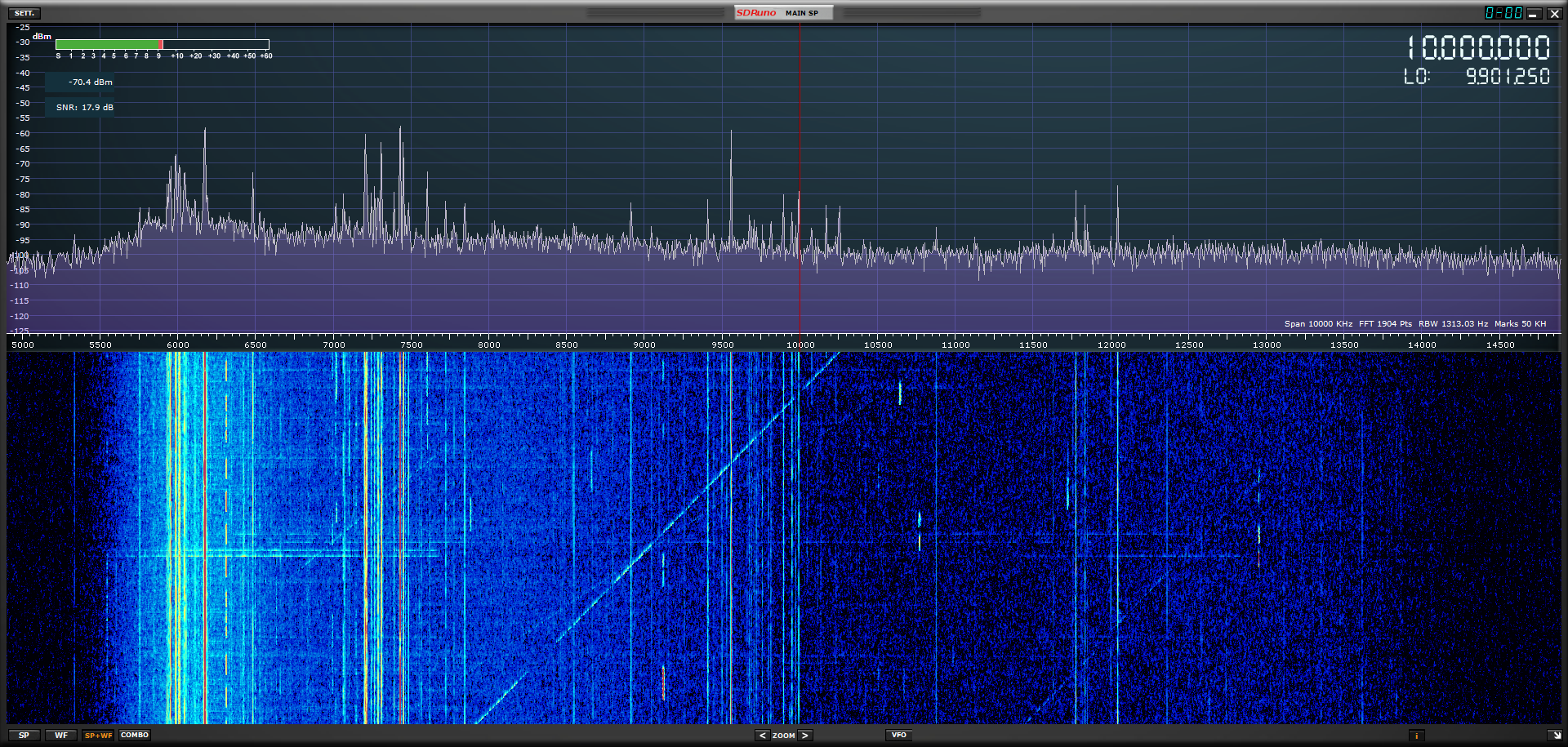mikael wrote:Why is that? HF propagation is magic, you know. You can bounce around the globe using milliwatts if the conditions are right.
Conditions are only that right occasionally. Since I see so many sweeps, even when conditions are only marginal, I can only assume it's either that there are a lot of these atmospheric probes or they're shooting significant power up there. Okay, 100 watts is not insignificant, though I admit it's not monster wattage either.
Right now, as an example, I'm watching WWV on 10 MHz. The signal is about S6 to S7 (-87 dB with a noise floor of about -110) here in Florida at the moment (roughly 2,000 miles away from Boulder, CO). WWV radiates at 10 kW with probably some of the best antennae out there. I see two sweeps running up across the waterfall with peaks on the display higher than WWV's. One attenuated itself just as it crossed 10 MHz, but the other, a stronger one, crossed 10 MHz at such a high level it blanked out WWV momentarily and even affected the AGC as it was traversing the waterfall display. Either that's someone pretty close by with just 100 watts or something pumping out much more wattage within a few thousand miles.
I don't mean to make a big deal out of this, because I realize in the grand scheme of things it's not, but I would not have guessed this kind of frequency sweeping was being done on such a wide scale based on those occasional chirps on my traditional receiver. But being able to SEE these linear sweeps run across a waterfall display, then hear them as they cross whatever station I'm tuned to, shows clearly what's being done.
SDR has certainly breathed some new life into this hobby for me.
-Noel
